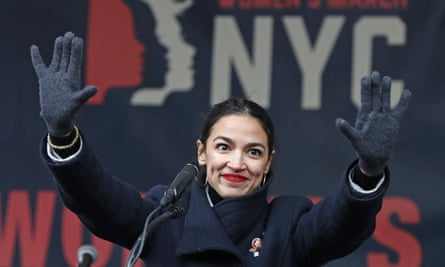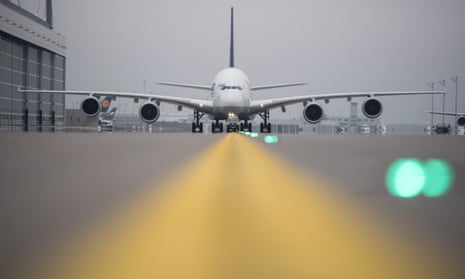When Concorde ceased commercial flights in 2003, it marked a peculiar moment in the history of human technological endeavour.
When it comes to inventions that improve our lives, we are used to a linear trajectory. Medicines enhance life expectancy, vehicles become more efficient and reliable, computers more powerful and user-friendly.
Concorde’s demise defied that logic. The decision to consign the airliner to the history books reversed a forward leap achievable using the technology of the 1970s. Forty years later, a 15-year-old has never lived in a world of commercially available supersonic flight. Breaking the speed of sound in an airliner is talked about today only as a dim and intangible vision of the future.
Airbus’s announcement that it is to stop making its A380 superjumbo in 2021, a mere 16 years after it first hefted its 277-tonne frame into the skies, feels like a similar affront to our expectations. It is an admission of failure, not just of Airbus’s commercial vision, but of the logic of technological progress.
There is no doubt that the A380 is a phenomenal feat of engineering. It weighs twice as much as a blue whale, is nearly as a long as a football pitch and stands about half as high as Nelson’s column, yet somehow it flies. Anyone who has ever seen it rumble past on the taxiway, dwarfing everything in its path, knows what a breathtaking sight it can be. But the facts speak for themselves: it has not been a success in the broader sense of the word.
The A380 was supposed to deliver the same long-term success as the original jumbo jet, Boeing’s 747. The idea was that the superjumbo’s size and prestige would make it a must-have for every airline, guaranteeing a steady revenue stream long into the future. But while more than 1,500 747s have been built and it remains in production after 50 years, just 234 A380s have ever been made, with about 80 more currently on order.
The smaller 787 Dreamliner, another Boeing bird, is already closing in on 800 deliveries and 1,500 orders, despite its first flight taking place in 2009, four years after the A380.
The big problem for Airbus was timing – a tricky vector to manage over the long and changeable horizons involved in building something as complex as a new commercial aircraft. The A380 was designed to serve as a sort of airborne cruise ship, ferrying more than 500 passengers at a time within its large, double-decker frame.
Fast growth in demand from Asian and Middle Eastern population centres in the 2000s seemed to make the plane a no-brainer, even if its development did run both over time and over budget, at an estimated £19bn.
But it made its first commercial flight in 2007, just as airlines’ needs were beginning to change.
After an initial surge of orders – some from flag-carrier airlines such as the Dubai-based Emirates that were attracted as much by its prestige as by economics – demand for the superjumbo began to evaporate as long-haul passenger numbers collapsed in the wake of the 2008 financial crisis.
Its sheer size meant that it swiftly became unprofitable when anything less than full, making it vulnerable to weakness in consumer demand.
Fuel prices have begun to creep up from the lows seen earlier in the A380’s life, making smaller but more efficient planes with longer ranges far more attractive to airlines.
A recent order reduction by the A380’s biggest customer, Emirates, sounded the giant’s death knell.
It’s unlikely that the A380 will be mourned with the same solemnity as Concorde, which thrilled the world with its sonic booms and whose demise was hastened by the tragic Air France crash in 2000.
But while the A380 has proved something of a misadventure for Airbus, it should, like Concorde, still serve as a reminder of what was possible – and what, one day, may be possible again.
China needs to open up on trade
As the curtain comes down on another inconclusive episode in the China/US trade war, it is almost impossible to discern a consistent pattern that allows observers to take a stab at forecasting the outcome. The only consistent theme running through Donald Trump’s day-to-day decision-making is its very capriciousness.
On Friday the president’s team ended talks with their opposite numbers in Beijing having made little progress, but with the promise of more negotiations in Washington this week. Both sides had hoped to produce a memorandum of understanding that could pave the way for a meeting between Trump and Xi Jinping next month.
Putting a meeting in the diary would have allowed Trump to again delay his threat of increasing the punitive tariff rate on $200bn of Chinese imports from 10% to 25%.
The White House might still blink and delay the tariff rise. But anyone listening to the National Economic Council Ddirector, Larry Kudlow, Trump’s chief economic adviser, would think that unlikely.
Kudlow has spent hours on US TV arguing that the 1 March deadline set by Trump is a rock-solid date unless there were the makings of a deal on the table.
At the heart of the talks is a dispute over whether China abuses its position in the World Trade Organisation to boost exports. One of many abuses relates to subsidies handed to state-owned industries from a variety of local, regional and national agencies, which Trump’s advisers, headed by the long-time China critic Robert Lighthizer, say are entirely opaque.
The US wants Beijing to be more transparent to comply with WTO rules aimed at stopping subsidised goods being dumped on world markets. Moves to open Chinese markets to foreign imports are another sticking point.
Distasteful though Trump’s tactics are, China should be more open about the way it subsidises business. On that the White House has a point.

New York’s loss of Amazon is another city’s gain
There are many in the mainstream Democratic party who have questioned Alexandria Ocasio-Cortez, the US representative for New York’s 14th congressional district since last month, for her part in killing off a deal between the city and Amazon.
The technology firm had planned to locate an east coast office employing up to 25,000 workers in the Queens area until local opposition, led by Ocasio-Cortez among others, fought it off.
She said Amazon’s withdrawal showed “everyday Americans still have the power to organise and ... can have more say than the richest man in the world” – a reference to the Amazon boss, Jeff Bezos.
Amazon cited the need for “positive, collaborative relationships with state and local elected officials who will be supportive over the long term” in its announcement to pull out of the New York agreement.
The New York mayor, Bill de Blasio, and the governor, Andrew Cuomo, were visibly disappointed. They focused on the estimated $27bn in tax revenue over 25 years the deal would create and jobs with an average salary of $150,000.
Ocasio-Cortez was more concerned with the $3bn of tax breaks needed to lure Amazon in the first place.
It is understandable that leftist Democrats demur at the bidding wars increasingly prevalent across the US as cities vie for jobs. Why should a rich company such as Amazon escape any taxes just because it is prepared to indulge in a game of blackmail with potential locations for its HQ?
However, the $3bn in tax breaks was not cash, as Ocasio-Cortez suggested when she said it would be better spent on teachers. It was money forgone from taxes not applied to new economic activity.
The loss is to the US state as a whole. But to an individual city it was money it would never have had without Amazon’s plan. That’s why Amazon will have no trouble finding another suitor.
